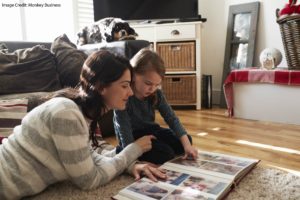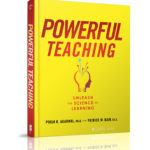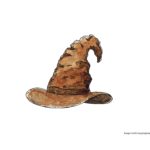You’ve probably heard of the “method of loci,” or — more glamorously — the “memory palace.”
Here’s how the strategy works. If I want to remember several words, I visualize them along a path that I know well: say, the walk from my house to the square where I do all my shopping.
To recall the words, I simply walk along that path again in my mind. This combination of visuals — the more striking the better — will help me remember even a long list of unrelated words.
This method gets lots of love, most famously in Joshua Foer’s Moonwalking with Einstein.
Surely we should teach it to our students, no?
Palace Boundaries
We always look for boundary conditions here on the blog. That is, even good teaching ideas have limits, and we want to know what’s outside those limits.
So, for the “method of loci,” one question goes like this: how often do you ask your students to memorize long lists of unrelated words?
If the answer is, “not often,” then I’m not sure how much they’ll benefit from building a memory palace.
Dr. Christopher Sanchez wondered about another limit.
The “method of loci” relies on visualization. Not everyone is equally good at that. Does “visuospatial aptitude” influence the usefulness of building a memory palace?
One Answer, Many Questions
The study to answer this question is quite straight-forward. Sanchez had several students memorize words. Some were instructed to use a memory palace; some not. All took tests of their visual aptitude.
Sure enough, as Sanchez predicted, students who used a memory palace remembered more words than those who didn’t.
And, crucially, palace builders with HIGH visualspatial aptitude recalled more words than those with LOW aptitude.
In fact, those with low aptitude said the memory-palace strategy made the memory task much harder.
This research finding offers a specific example of a general truth. Like all teaching strategies, memory palaces may help some students — but they don’t help all students equally.
This finding also leads to some important questions.
First: If a student has low visuospatial aptitude, how can we tell?
At this point, I don’t have an easy way to diagnose that condition. (I’ve asked around, but so far no luck.)
My best advice is: if a student says to you, “I tried that memory palace thing, but it just didn’t work for me. It’s so HARD!” believe the student.
Second: does this finding apply to other visualization strategies? More broadly, does it apply to dual coding theory?
Again, I think the answer is “probably yes.” Making information visual will help some students…but probably not all of them.
The Big Question (I Can’t Look…)
This next question alarms me a little; I hardly dare write it down. But, here goes…
As you know, learning styles theory has been soundly debunked.
However, might Sanchez’s research imply a kind of learning-anti-style?
That is, no one is a “visual learner.” But, perhaps some people don’t learn well from visual cues, and rely more on other ways of taking in information?
In other words: some students might have a diagnosed learning difference. Others might not have a serious enough difference to merit a diagnosis — but nonetheless struggle meaningfully to process information a particular way.
Those students, like Sanchez’s students with low visuospatial aptitude, don’t process information one way, and prefer to use alternate means.
So, again, that’s not so much a “learning style” as a “learning anti-style”: “I prefer anything but visual, please…”
I haven’t seen this question asked, much less investigated. I’ll let you know what I find as I explore it further.





That is the problem with common core. It lends itself to one style fits all and we all know that’s not true — especially in math. It has to be revamped to reflect competence as well as understanding and critical thinking. Yes, competence in performance and understanding are not the same. Memory is also differentiated. Some memory works with this path, some with assigning pictures, and some with rote, it depends on the intellectual level, or level of focus. The most important thing is to help each child learn what works best for them at the stage of learning that they are currently experiencing. When I work with math students who are mired in failure I have to evaluate the above before I develop a strategy.